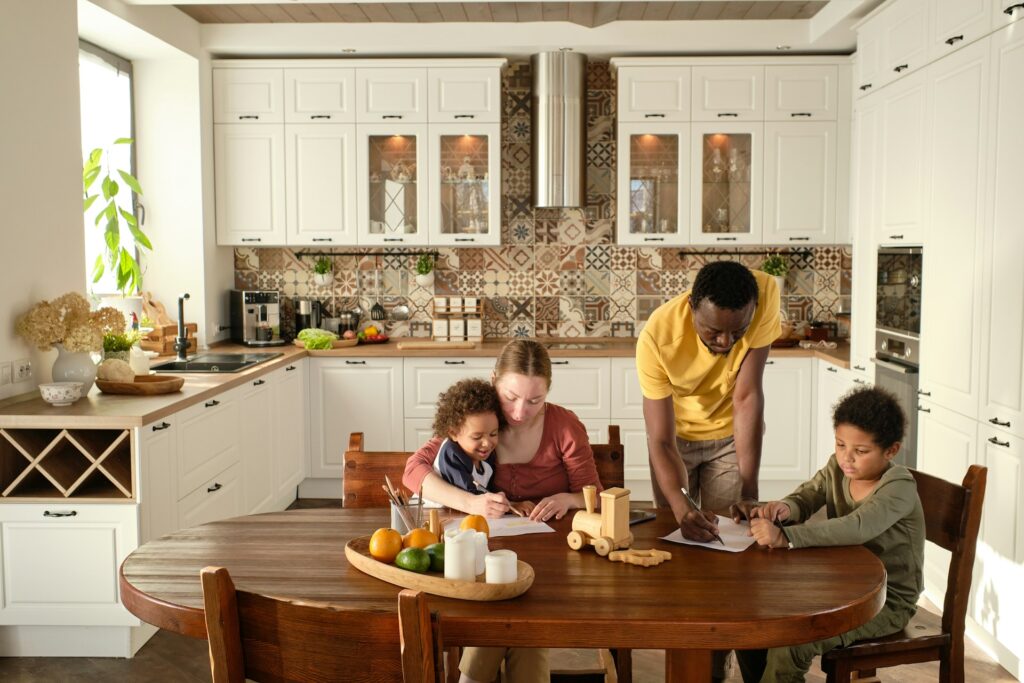Ensuring accessibility and mobility in Multifamily homes is essential for creating a living environment that works for everyone. When spaces are designed with inclusivity in mind, residents with all levels of ability can move freely and live independently. Thoughtful renovations not only improve quality of life for residents but also help build a community where everyone feels welcome. As Multifamily developments continue to grow, creating accessible spaces becomes increasingly important for long-term tenant satisfaction.
Accessible Design Features That Matter
A successful accessible design starts with removing barriers that make daily life difficult. Features such as wider doorways and hallways allow for easy passage of wheelchairs and mobility aids. In addition, lever-style door handles are far easier to operate for individuals with limited hand dexterity than traditional knobs. Zero-step entries are another critical element; eliminating stairs at entrances ensures that all residents can enter their homes and common areas without difficulty.
Bathrooms and kitchens should be designed with accessibility in mind. Installing grab bars in bathrooms near toilets and showers provides essential support. Lower countertops and easily reachable appliances in kitchens enable residents to use these spaces independently. These design features not only improve the functionality of a home but also demonstrate a genuine commitment to creating an inclusive environment.
In essence, accessible design is about understanding the challenges that some residents face and finding practical solutions that make everyday tasks simpler. When these elements are incorporated into Multifamily homes, everyone benefits from a more comfortable and adaptable space.
Upgrading Lighting and Handrails for Better Mobility
Good lighting and secure handrails play a vital role in creating a safe environment. Proper lighting reduces the risk of accidents and helps residents navigate their surroundings with confidence. For instance, installing LED lights along walkways, stairwells, and parking areas ensures that all paths are clearly visible, especially during the evening or early morning hours. Energy-efficient LED fixtures not only provide consistent brightness but also help lower energy costs.
Motion sensor lights add an extra layer of safety by automatically illuminating areas when movement is detected. This feature is particularly useful in areas that might otherwise be dark or in spaces where residents need reassurance that their path is secure.
Handrails are equally important in promoting mobility. They provide stability along stairways, ramps, and long hallways, offering support to those who might struggle with balance. Choosing handrails made of sturdy materials and with ergonomic designs makes them comfortable to grip and use. Securely fastened handrails along every flight of stairs and on ramps give residents the confidence to move about independently.
Together, these upgrades help create an environment where every resident, regardless of mobility challenges, can move safely and comfortably. A focus on proper lighting and secure handrails is a clear sign of a property that values the well-being of its community.
Creating Inclusive Community Spaces
Accessibility should extend beyond individual units and common corridors to include all community areas. Inclusive community spaces are designed so that everyone, including individuals with disabilities, can gather, relax, and enjoy recreational activities.
Outdoor spaces such as playgrounds, picnic areas, and community gardens can be designed to be accessible for all. For example, installing accessible playground equipment ensures that children with disabilities can play alongside their peers. Ground-level play elements, swings with harnesses, and sensory-rich features make the playground a welcoming place for every family.
Seating areas in community spaces should also be accessible. Picnic tables with extended tops provide sufficient space for wheelchair users, and benches with supportive armrests help all residents feel comfortable. Additionally, walkways leading to these areas should be wide, smooth, and free of obstacles to ensure that everyone can access these communal spaces easily.
Other community features like fitness stations and recreation zones can be designed with accessibility in mind. Raised garden beds, for example, allow individuals who use wheelchairs or have limited mobility to participate in gardening. Outdoor fitness equipment that is accessible encourages residents to stay active and engage with one another, creating a stronger sense of community.
When Multifamily properties invest in accessible community spaces, they not only enhance the daily living experience but also build a more connected and inclusive neighborhood. These efforts show that the property is committed to the well-being of every resident.
The Value of a Thoughtful Renovation Approach
Renovating Multifamily homes to improve accessibility is more than just adding ramps or widening doorways. It is about rethinking the overall design to ensure that every resident feels valued and supported. A thoughtful renovation approach addresses both the physical needs and the social aspects of living in a community.
Accessible renovations are not simply about compliance with regulations; they are an opportunity to create spaces that foster independence and encourage social interaction. When residents can navigate their homes and common areas safely, they are more likely to participate in community events and enjoy a higher quality of life.
Investing in accessibility can also improve the overall perception of the property. A building that is easy to navigate and free of physical barriers sends a strong message about the care taken to accommodate all residents. This can lead to higher tenant satisfaction, lower turnover rates, and ultimately, a more successful property.
Upgrade Your Accessibility Today
Ensuring accessibility and mobility in Multifamily homes involves careful planning and a thoughtful approach to design. Key accessible features—wider doorways, lever-style handles, and zero-step entries—remove physical barriers and promote independence. Upgraded lighting and sturdy handrails enhance safety and boost confidence, while inclusive community spaces ensure that all residents have a place to gather, relax, and participate in recreational activities.
Ready to transform your property into an accessible and inclusive space? Contact us today to learn how we can help you with your Multifamily lobby renovation and create a welcoming environment for all residents.



